And now, for the final half of my final day in Capadoccia, Turkey…
We continued hiking along up the scenic valley that I mentioned a few days ago, checking out the lovely scene in the lovely weather…
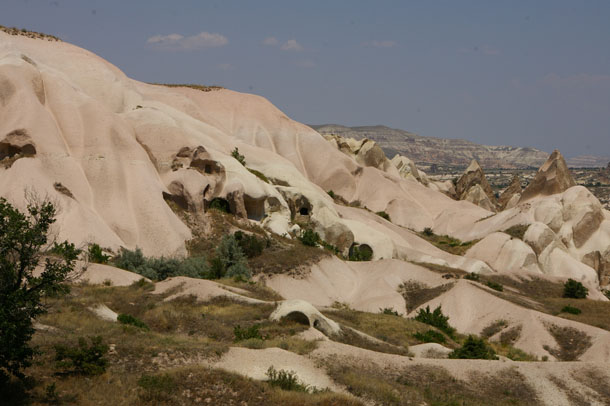
The valley floor was reasonably wet and vegetated, but the higher slopes were eroding at a rate too quick for vegetation to get established. Here’s an exposure of the tuff there, bearing kandy-kolored lithic fragments. A Turkish 1-lira coin (about the same size as a U.S. quarter) lies near the center to provide a sense of scale:
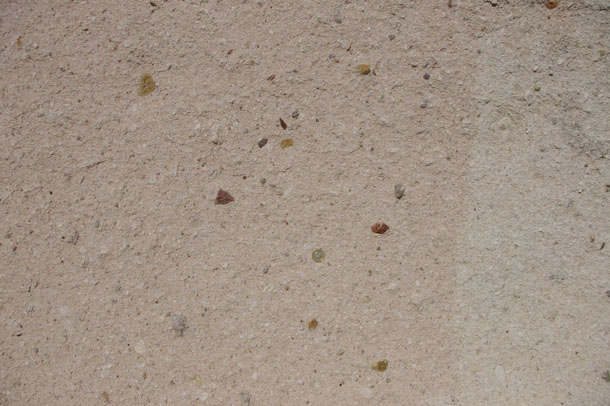
Here’s a wheat field along the valley bottom:
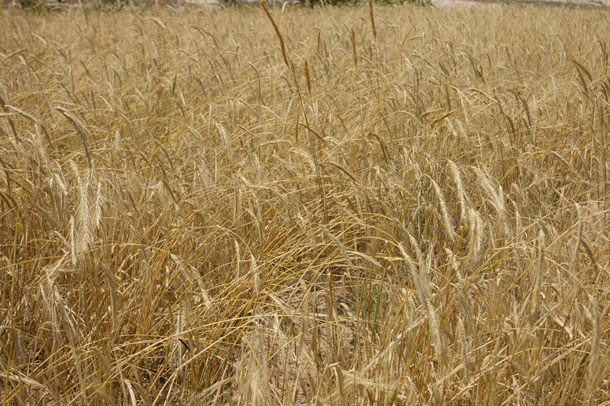
Looking up at a nice example of differential weathering: the uppermost pinkish layer of tuff appears to be… (wait for it) …tougher than the lower, more white-colored layers of tuff. I liked the way it weathered out here into this duckbill-like aerial peninsula:
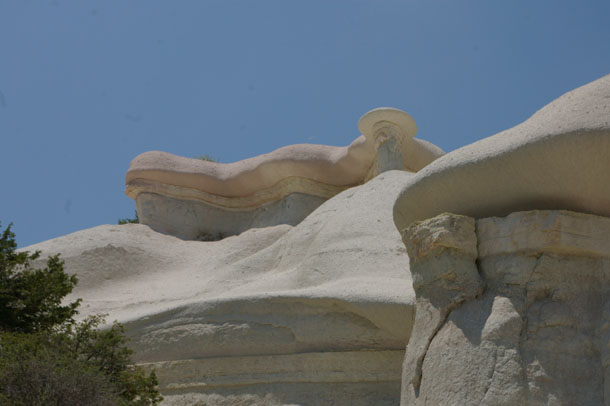
The highlight of the hike came near the end, as we climbed up out of the valley and onto the dissected plateau. We saw one tall hoodoo with a hole near the top, and we wondered, “Are there paintings up in that one?” As we got closer, we saw that there were steps notched into the side of the tower…
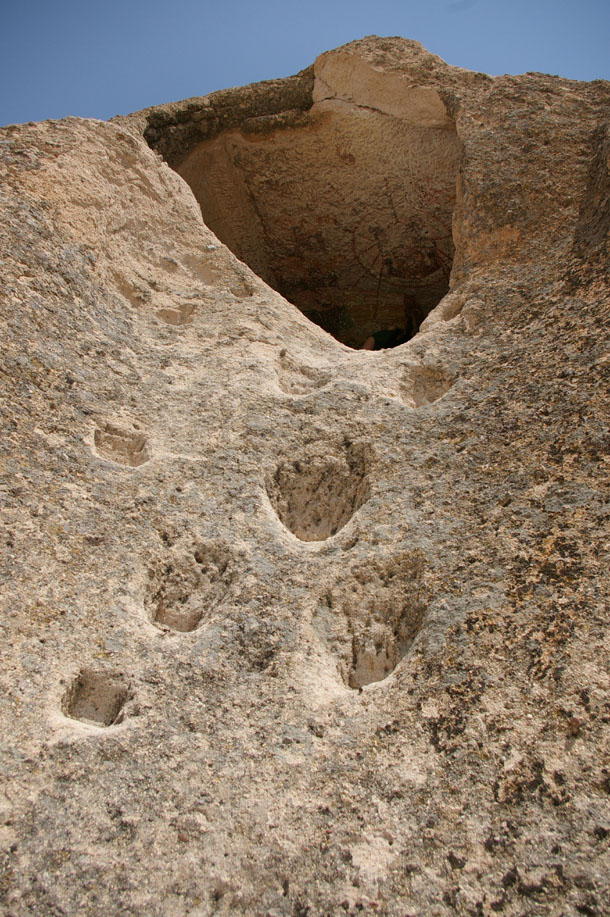
…So we climbed up:
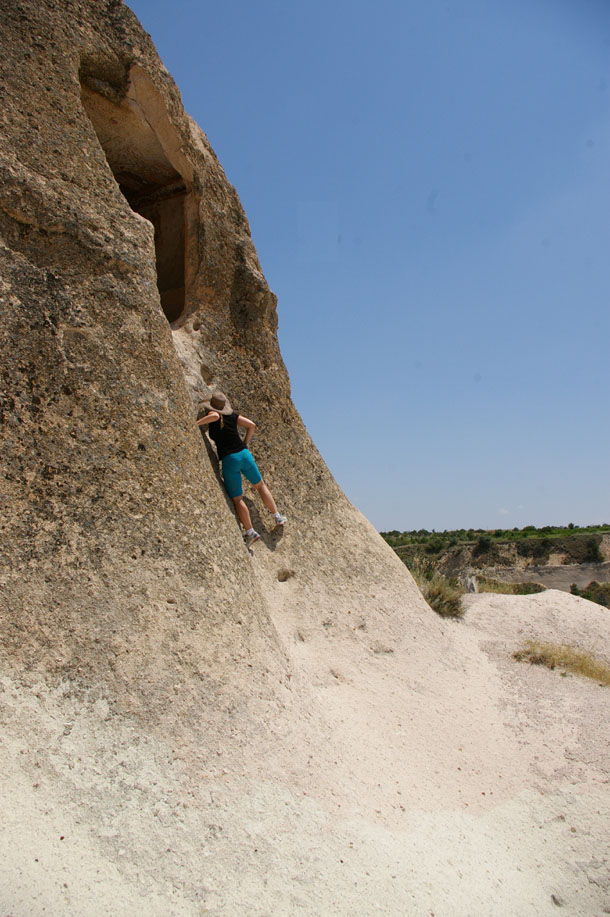
We got inside, to a nice shady nook, with a lovely view out over the dry landscape:
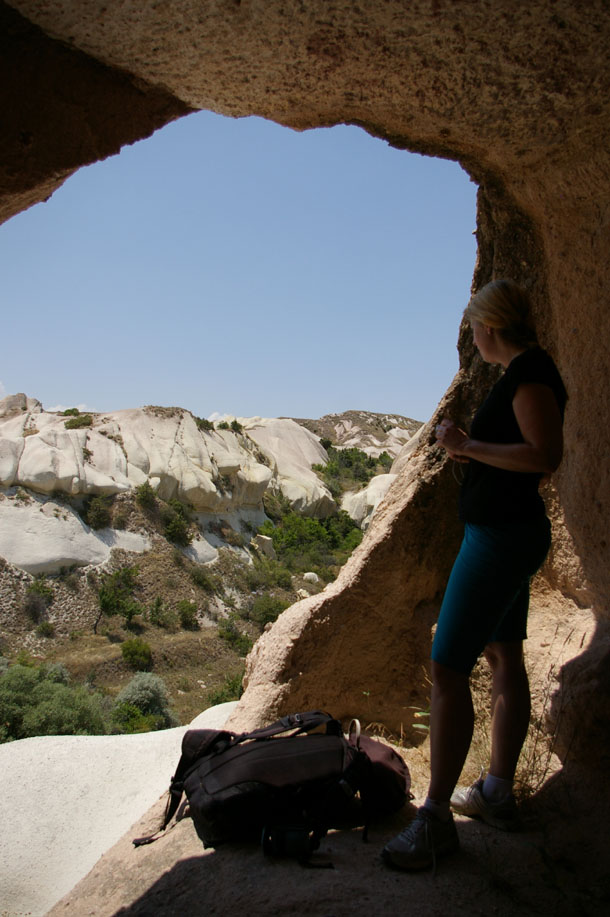
And sure enough, there were Christian paintings from the Byzantine era all over the inside. They were defaced, and therefore of lower quality than the ones we had seen in the “museum” earlier in the day, but because we discovered these ones on our own, they seemed that much cooler to us.
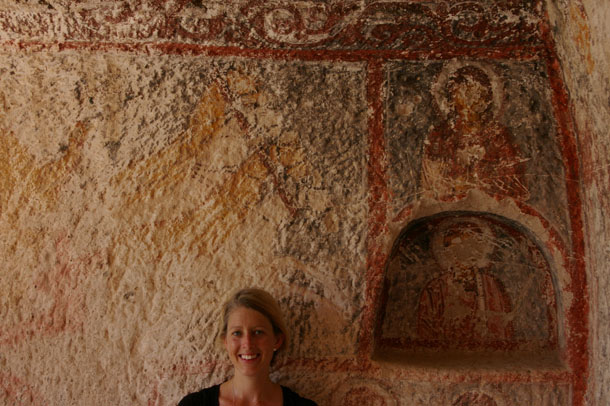
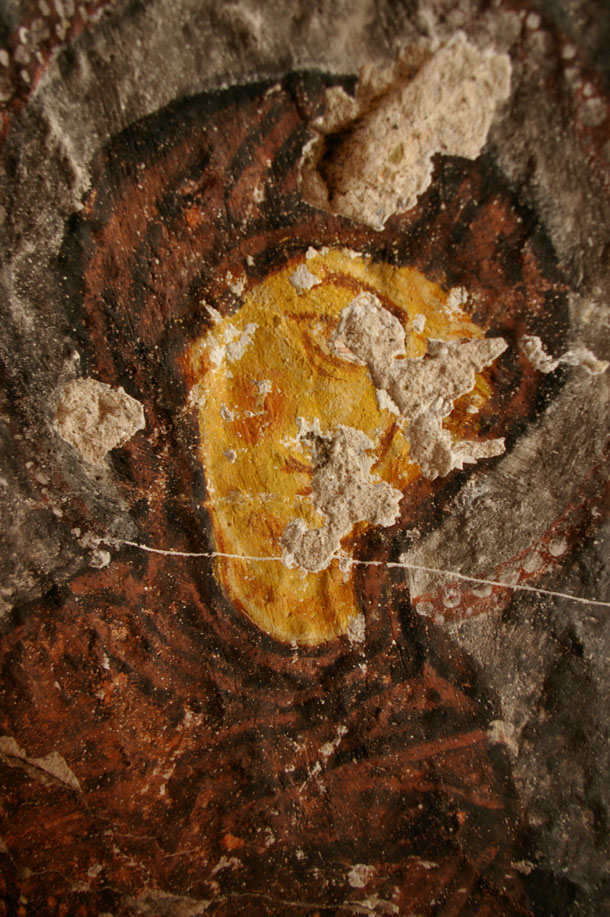
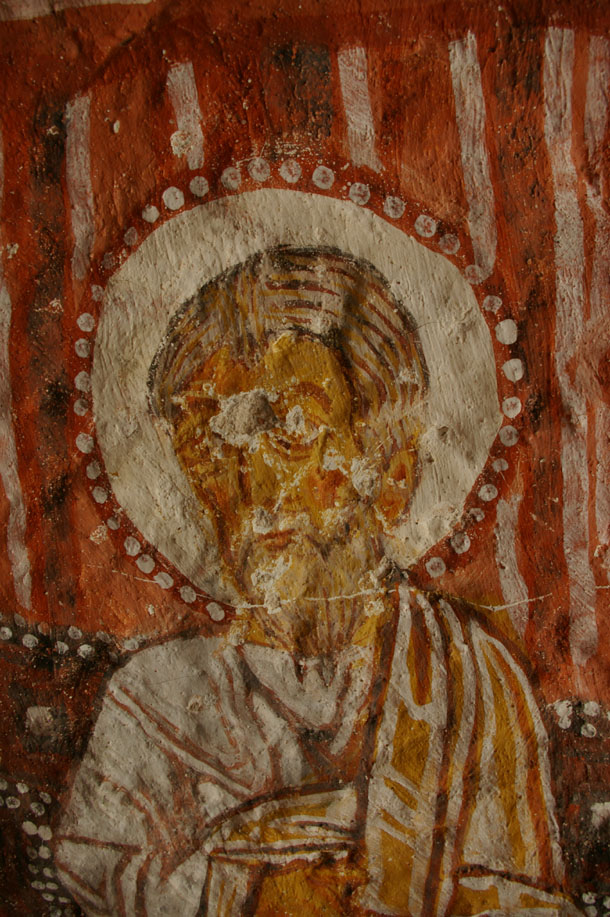
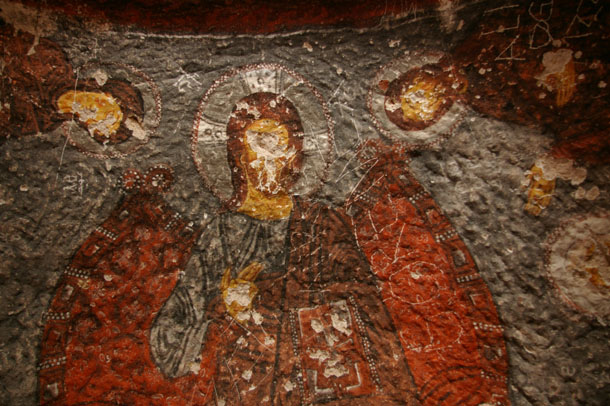
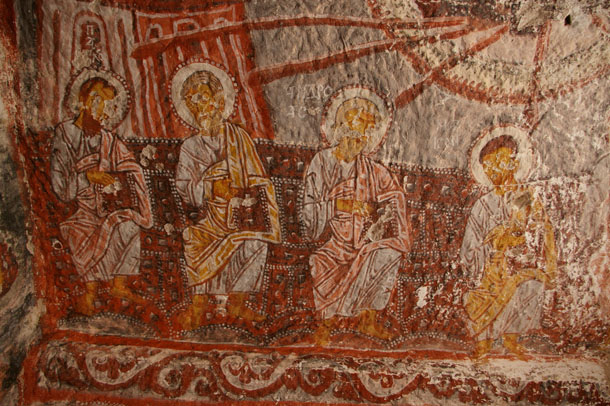
We relished that experience — it reminded me quite intensely of an experience I had once in Joshua Tree National Park, in southern California, where on a hot day, I looked around for some shade and saw a little overhanging pocket on the side of one of the granite domes in the Wonderland of Rocks, and I climbed up into it and found native American pictographs on the wall — art providing tangible evidence of someone else, another human being, hanging out in that same protective space and marking their territory with paint. Joshua Tree and Capadoccia — different arid regions, with different tribes practicing different religions (possibly at different times too, though conceivably they could have been painted on the same day). It’s a special sort of connection between me in the present, and them in the ancient past — an experience of shared humanity.
Lily and I rested awhile in this ancient, desecrated church, taking in its silence and its mix of the vulgar and the sublime. When we had cooled down and rested, we returned to the village of Göreme, where we got a quesadilla-like snack:
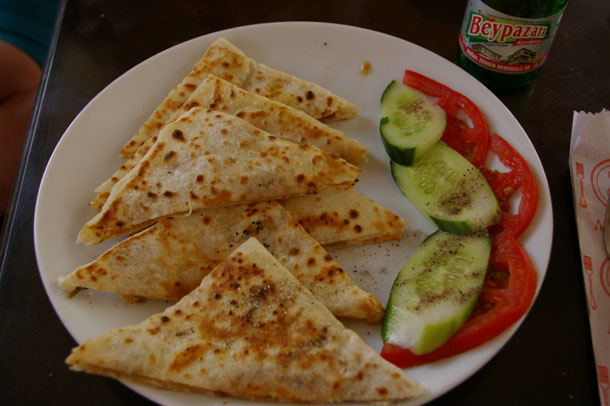
Late in the day, the sun sank to the west, and we took a last look around Göreme.
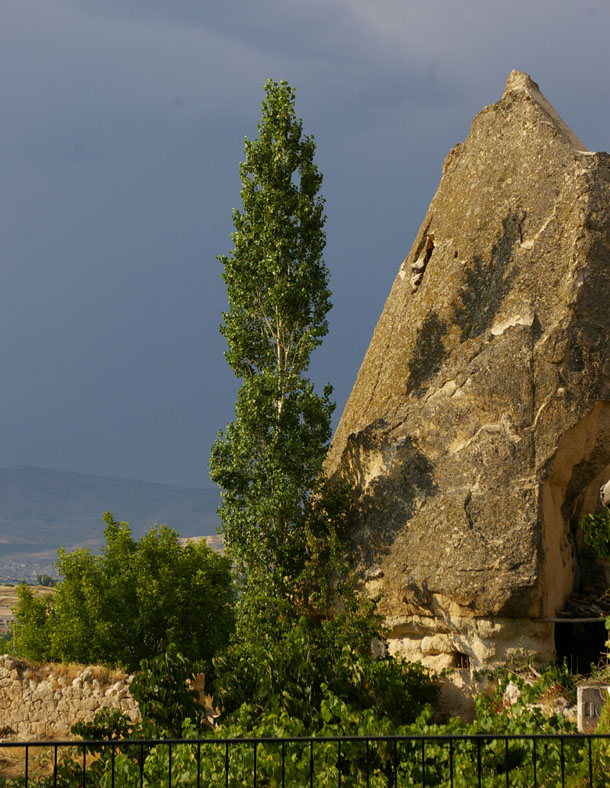

And then we got on a bus, and rode back to İstanbul.
Fare thee well, Capadoccia.

0 thoughts on “Capadoccia 7”